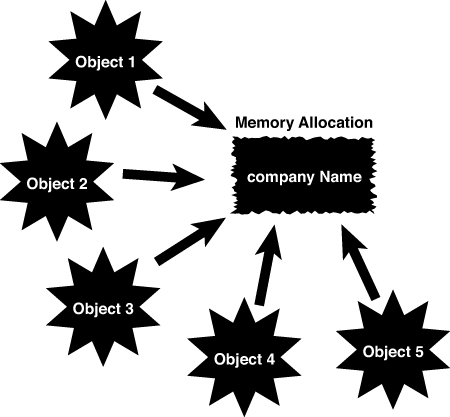Attributes
Attributes represent the state of the object because they store the information about the object. For our example, the Cabbie class has attributes that store the name of the company, the name of the cabbie, and the cab assigned to the cabbie. For example, the first attribute stores the name of the company:
private static String companyName = "Blue Cab Company";
Note here the two keywords private and static. The keyword private signifies that a method or variable can be accessed only within the declaring object.
The static keyword signifies that there will be only one copy of this attribute for all the objects instantiated by this class. Basically, this is a class attribute. (See Chapter 3, “Advanced Object-Oriented Concepts,” for more discussion on class attributes.) Thus, even if 500 objects are instantiated from the Cabbie class, only one copy will be in memory of the companyName attribute (see Figure 4.2).
Figure 4.2. Object memory allocation.
The second attribute, name, is a string that stores the name of the cabbie:
private String name;
This attribute is also private so that other objects cannot access it directly. They must use the interface methods.
The myCab attribute is a reference to another object. The class, called Cab, holds information about the cab, such as its serial number and maintenance records:
private Cab myCab;
Note that at this point, only a reference to a Cab object is created; there is no memory allocated by this definition.

